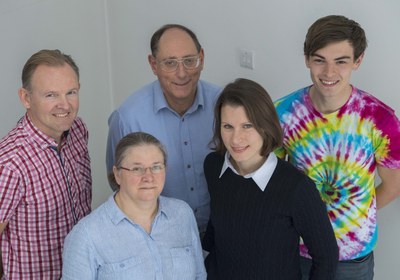Membrane traffic in the late endocytic pathway
General audience summary:
Cells are compartmentalized by specialized organelles (little organs within each cell), and cargo including proteins is moved between these compartments by trafficking of vesicles. We aim to understand how the membrane traffic machinery moves specific proteins around the cell for their normal function and for their degradation, the latter taking place in the lysosome organelle. We hope our work will contribute to: the understanding of many diseases, including diabetes, atherosclerosis and neurodegenerative diseases, where defects in the cell surface and/or in membrane traffic occur; and infectious diseases where microbes subvert the membrane traffic system in order to infect cells. It will also contribute to developing better ways of targeting drugs to particular sites within cells for more specific drug therapies.
Strategic CIMR Themes: Membrane Trafficking, Organelle Biology
Funding: Medical Research Council, BBSRC
Lab members: Maria Ramos



